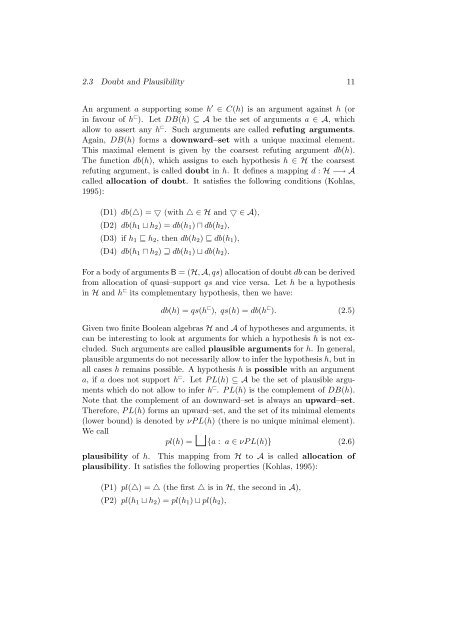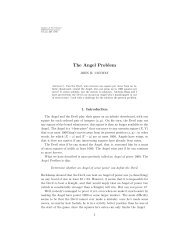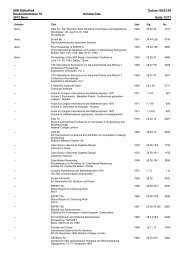Propositional Argumentation Systems and Symbolic Evidence Theory
Propositional Argumentation Systems and Symbolic Evidence Theory
Propositional Argumentation Systems and Symbolic Evidence Theory
Create successful ePaper yourself
Turn your PDF publications into a flip-book with our unique Google optimized e-Paper software.
2.3 Doubt <strong>and</strong> Plausibility 11<br />
An argument a supporting some h ′ ∈ C(h) is an argument against h (or<br />
in favour of h ❁ ). Let DB(h) ⊆ A be the set of arguments a ∈ A, which<br />
allow to assert any h ❁ . Such arguments are called refuting arguments.<br />
Again, DB(h) forms a downward–set with a unique maximal element.<br />
This maximal element is given by the coarsest refuting argument db(h).<br />
The function db(h), which assigns to each hypothesis h ∈ H the coarsest<br />
refuting argument, is called doubt in h. It defines a mapping d : H −→ A<br />
called allocation of doubt. It satisfies the following conditions (Kohlas,<br />
1995):<br />
(D1) db(△) = ▽ (with △ ∈ H <strong>and</strong> ▽ ∈ A),<br />
(D2) db(h 1 ⊔ h 2 ) = db(h 1 ) ⊓ db(h 2 ),<br />
(D3) if h 1 ⊑ h 2 , then db(h 2 ) ⊑ db(h 1 ),<br />
(D4) db(h 1 ⊓ h 2 ) ⊒ db(h 1 ) ⊔ db(h 2 ).<br />
For a body of arguments B = (H, A, qs) allocation of doubt db can be derived<br />
from allocation of quasi–support qs <strong>and</strong> vice versa. Let h be a hypothesis<br />
in H <strong>and</strong> h ❁ its complementary hypothesis, then we have:<br />
db(h) = qs(h ❁ ), qs(h) = db(h ❁ ). (2.5)<br />
Given two finite Boolean algebras H <strong>and</strong> A of hypotheses <strong>and</strong> arguments, it<br />
can be interesting to look at arguments for which a hypothesis h is not excluded.<br />
Such arguments are called plausible arguments for h. In general,<br />
plausible arguments do not necessarily allow to infer the hypothesis h, but in<br />
all cases h remains possible. A hypothesis h is possible with an argument<br />
a, if a does not support h ❁ . Let P L(h) ⊆ A be the set of plausible arguments<br />
which do not allow to infer h ❁ . P L(h) is the complement of DB(h).<br />
Note that the complement of an downward–set is always an upward–set.<br />
Therefore, P L(h) forms an upward–set, <strong>and</strong> the set of its minimal elements<br />
(lower bound) is denoted by νP L(h) (there is no unique minimal element).<br />
We call<br />
pl(h) =⊔ {a : a ∈ νP L(h)} (2.6)<br />
plausibility of h. This mapping from H to A is called allocation of<br />
plausibility. It satisfies the following properties (Kohlas, 1995):<br />
(P1) pl(△) = △ (the first △ is in H, the second in A),<br />
(P2) pl(h 1 ⊔ h 2 ) = pl(h 1 ) ⊔ pl(h 2 ),








